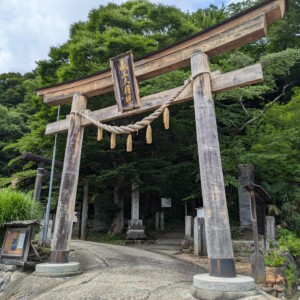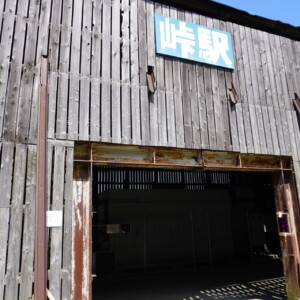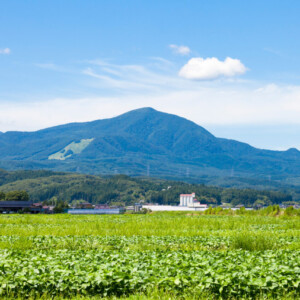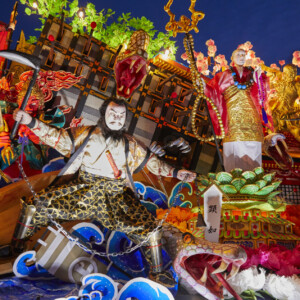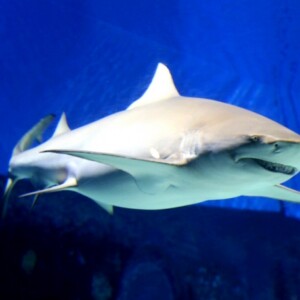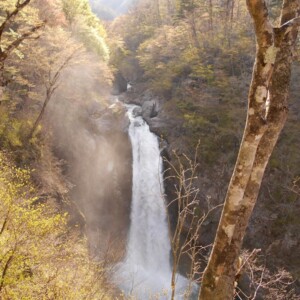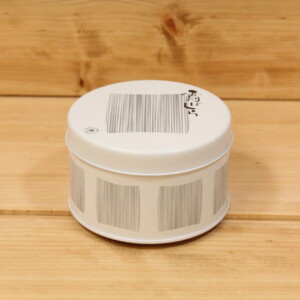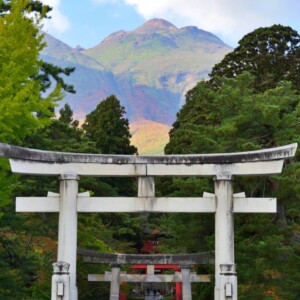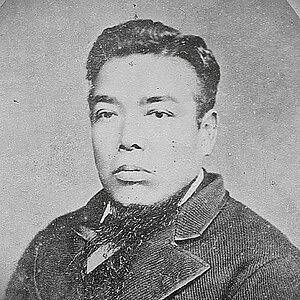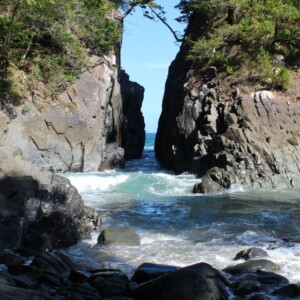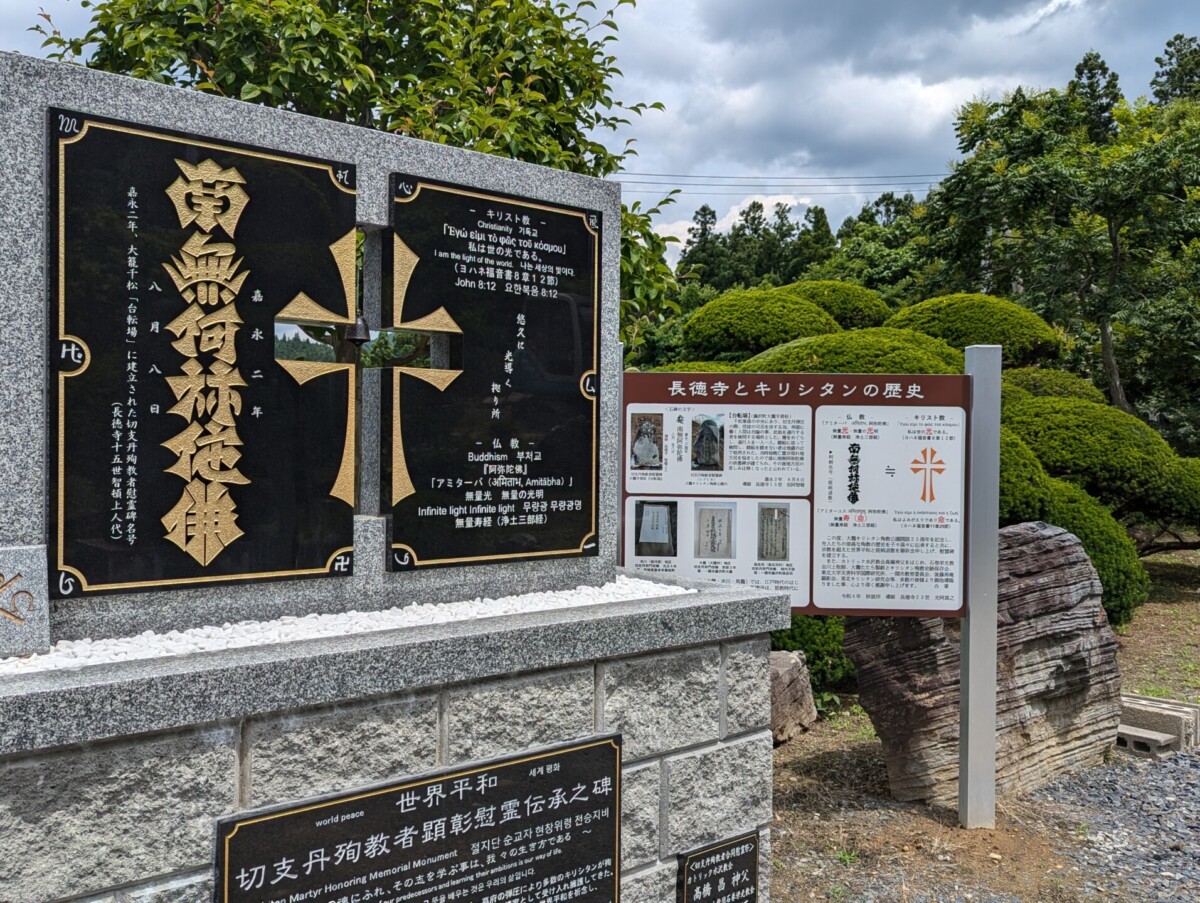
[Christianity spreading in Tohoku: Part 1] The Northern Miyagi Prefecture to Southern Iwate Prefecture, the village of hidden Christians.
table of contents
- 1 What were people's beliefs before the Sengoku period?
- 2 Christianity spread in Japan
- 3 Christianity spreads to Tohoku
- 3.1 1558 Iron manufacturing business begins in the Fujisawa and Miyagi Sanriku regions of Iwate Prefecture.
- 3.2 1610 Christian missionary work begins within the Sendai domain
- 3.3 1613 Keicho envoys to Europe cross the sea in search of overseas trade and progress.
- 3.4 1619 The ban on Christianity was strengthened nationwide.
- 3.5 1624 Full-scale ban on Christianity in the Tohoku region
- 4 Christianity is spreading in Tohoku, a hidden Christian village
The prefectural border between Miyagi Prefecture and Iwate Prefecture, the Yonekawa area in Towa-cho, Tome City, the Okago area, Fujisawa-cho, Ichinoseki City, Iwate Prefecture, and the Magome area, Motoyoshi-cho, Kesennuma City, are known as ``hidden Christians''. Did you know that it was " Sato"
There are several places in Tohoku that are related to Christianity, but this time we will talk about the hidden Christians in Tohoku, who have a terrible history and still remain today.This time, we will talk about the hidden Christians in Tohoku, which are spreading around the northern part of Miyagi Prefecture (Tome City - Kesennuma City) and the southern part of Iwate Prefecture (Fujisawa Town). The first part is about Christianity, and the second part includes on-site interviews and introduces the history of hidden Christians in Tohoku, southern Iwate prefecture, and northern Miyagi prefecture, and the places of martyrdom that they actually visited.
What were people's beliefs before the Sengoku period?
Before talking about hidden Christians, I first need to explain why Christianity spread in Japan, an island nation, and what kind of religions there were in ancient Japan.
Japan currently has a mix of diverse religious cultures such as Shinto, Buddhism, and Christianity, but the origin of Japanese faith is Shinto , and Japanese people have felt the existence of gods since the Jomon period. , we have joined hands to make this a sacred place.
Around the 6th century, Buddhism was introduced from the continent, and when it was introduced, it had a strong academic element rather than a religious one, and the teachings and knowledge gained from it were said to belong to the privileged classes such as the emperor and aristocrats. It is being said.
Christianity spread in Japan
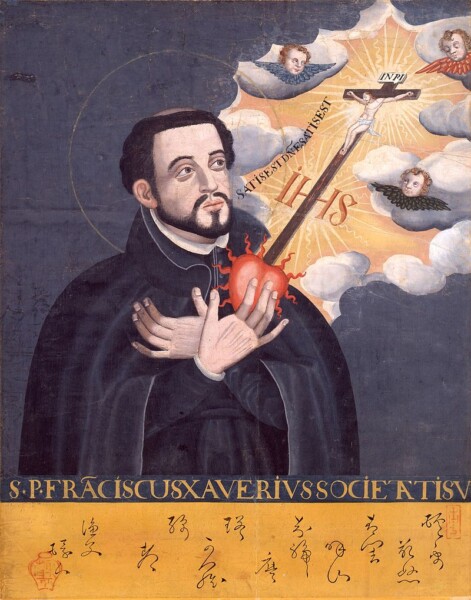
In 1549, during the Muromachi period, Spanish Jesuit missionary Francisco Xavier landed in Kagoshima, at a time when the Portuguese introduced guns and the times and war situation were beginning to change dramatically.
In 1550, Francisco Xavier had an audience with Takahisa Shimazu under the guidance of Anjiro, a Kagoshima native, and in November of the same year, he had an audience with Yoshitaka Ouchi, the shugo daimyo of Suo Province (present-day Yamaguchi Prefecture). He was given permission to spread the religion and conducted evangelistic activities in Hirado, Yamaguchi, and other areas. At this time, Yoshitaka Ouchi granted him Daidoji Temple, the first Christian church in Japan. *By the way, the name "Daidoji" means "Temple of the great road leading to heaven."
During his two-year stay there, he baptized more than 500 people, and in 1551, at the invitation of Otomo Yoshige, he also preached in Oita.
In 1553, the Funai Church (in Bungo Province - present-day Oita Prefecture) was built, and Christian missionary work and trade between the two countries began to be carried out together. The feudal lords of the Kyushu region protected Christianity in order to gain profits from trade between the two countries, became believers themselves, and recommended Christianity to other people. From around 1573, the number of believers increased significantly.
In 1587, an order was issued to expel missionaries.
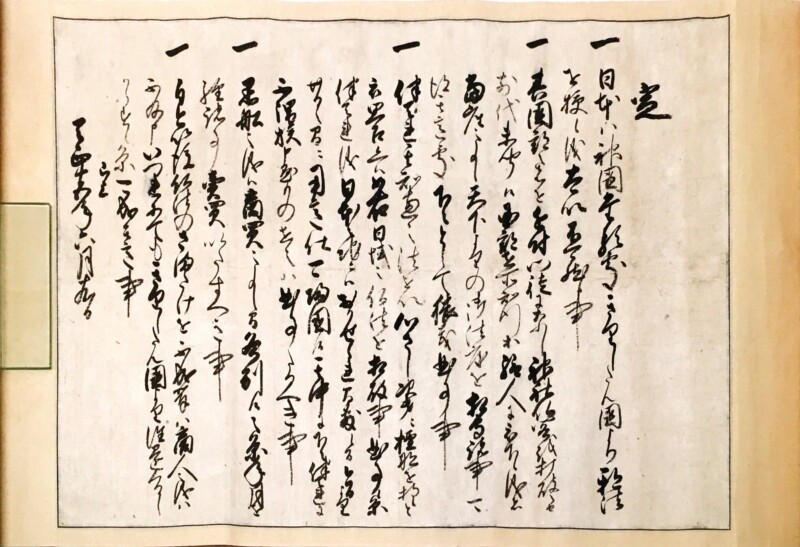
Later, during the era of Toyotomi Hideyoshi, he initially took the same stance as Nobunaga in accepting Christianity, but in 1587, after the pacification of Kyushu, he announced restrictions on Christian missions.
This required missionaries to leave the country, but foreigners (merchants) not involved in missionary work remained free to come and go, and individuals were also allowed to practice Christianity. It was also possible for feudal lords to convert to Christianity, except that Hideyoshi's permission was required, but in reality Yoshitaka Kuroda (commonly known as Kuroda Kanbei), who was already a Christian daimyo, abstained from Christianity. There was also a time when Ukon Takayama gave up his position for his faith.
In 1612, the Tokugawa shogunate declared a ban on Christianity.
On March 21, 1612, the Shogunate issued a ban on Christianity in Sunpu, Edo, and Kyoto, ordering the destruction of churches and a ban on missionary work. As a result, Christianity was banned and came to be called a sect of evil. However, it is said that no thorough measures were taken at the time the ban on Christianity was first promulgated because missionaries were deeply involved in trade between South and South Korea (particularly with Portugal).
The persecution of Christianity began to become severe four years after the banning of Christianity in 1612. Around this time, the first national isolation order, the ``Two Port Restriction Order'' (an order restricting the arrival of ships from Europe to Nagasaki Port and Hirado Port), was issued. The Tokugawa shogunate strictly prohibited Christianity, ``all the way down to the peasants.''
the Shimabara Rebellion (a large-scale armed struggle against the Edo Shogunate, which was caused mainly by peasants and Christians in the Shimabara/Amakusa region) that occurred in 1637 , the Shogunate thoroughly banned Christianity and A crackdown was carried out. Due to the gradual strengthening of national isolation, it became impossible for missionaries to come to Japan.
Christianity spreads to Tohoku
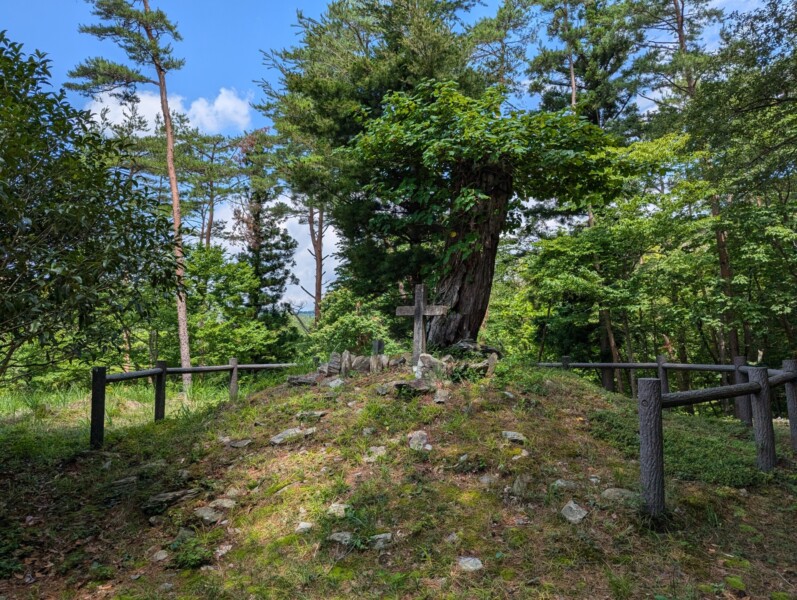
Why Christianity spread in the Tohoku region, which was far away from the Kyushu region, is due to the geographical characteristics of present-day Towa-cho, Tome City and Ogogo area, Fujisawa-cho, Iwate Prefecture, and two people from Bicchu (present-day western Okayama Prefecture). The brothers are very involved.
1558 Iron manufacturing business begins in the Fujisawa and Miyagi Sanriku regions of Iwate Prefecture.

The present-day Towa-cho, Tome City, Motoyoshi-cho, Kesennuma City, and Okago areas, Fujisawa-cho, Iwate Prefecture, are high-quality mining areas and were areas where Date Masamune encouraged iron manufacturing. Senmatsu Daihachiro and Kohachiro, who were said to be iron workers and Christians, from Tosakayama in Bichoku , and utilized the cutting-edge European technology at the time. Iron manufacturing was carried out.
Under the leadership of brother engineers Daihachiro and Kohachiro and the Sendai clan, the ironworks were called ``Doya,'' and many unique types of iron were made . In addition to being used in the construction of castles, 2,400 kan (9,000 kg) of iron was sent to Osaka Castle on the orders of Toyotomi Hideyoshi, and iron became an important product of the Sendai domain.
As mentioned above, the brothers Senmatsu Daihachiro and Kohachiro were devout Christians, and it is said that their missionary activities began in this area.
1610 Christian missionary work begins within the Sendai domain
Meanwhile, Date Masamune, who had defeated the Satake and Ashina clans as the leader of the Tohoku clan and was rapidly expanding his power, Luis Sotelo , at his Edo mansion in 1610, and allowed Sotelo to propagate Christianity within the Sendai domain. Plan trade with Nanban.
1613 Keicho envoys to Europe cross the sea in search of overseas trade and progress.
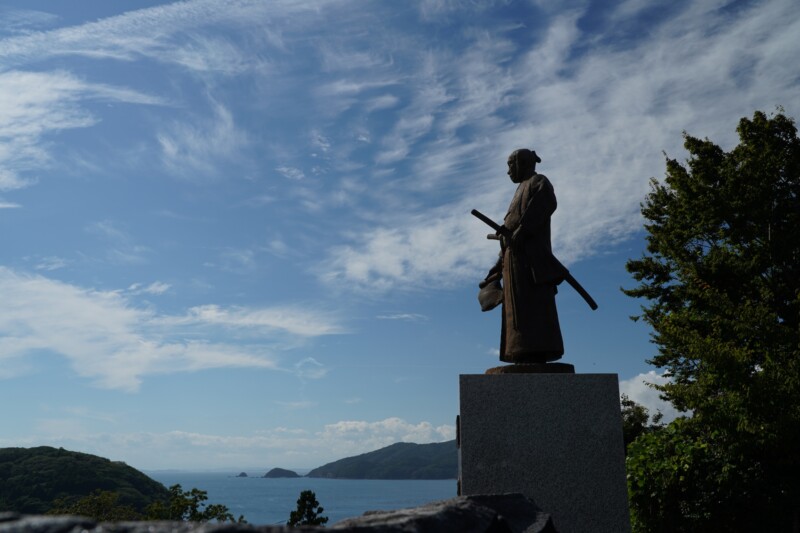
In 1613, Masamune Date's Keicho envoy to Europe, Tsunenaga Hasekura and his party, accompanied by 190 people, including Vizcaino and Sotelo, the ambassadors of Hispania (present-day Spain), sought direct trade with Novispania (Mexico) in exchange for acceptance of Christian missionary mission. He was sent to the King of Hispania (Spain) and the Pope of Rome.
Goto Juan , the second son of Hidenobu Iwabuchi, the lord of Fujisawa Castle in Iwai District, Mutsu Province, was baptized on Ukujima in the Goto Islands (present-day Nagasaki Prefecture), and through Tsunenaga Hasekura he became the Sengoku Daimyo of Mutsu Province.・He served Date Masamune, and as the brother-in-law of Nobuyasu Goto, he was given 1,200 koku in Mibun Village (present-day Mizusawa Fukuhara, Oshu City, Iwate Prefecture), and he developed a close friendship with Carvalho (a Portuguese Jesuit missionary who came to Japan in the early Edo period). , will strive to spread the word in the northern part of Senboku, such as Esashi, Isawa, Tome, and Kurihara. Around the same time, Gamo Ujisato, the lord of the Aizu domain, was baptized at the recommendation of Takayama Ukon.
The Edo Shogunate promulgated a ban on Christianity in 1612, restricting the entry of Nanban ships to Hirado and Nagasaki, but Date Masamune, who had generously protected Christianity, left the ban unchanged even when the ban on Christianity was first declared, He was carrying out missionary work in the area.
1619 The ban on Christianity was strengthened nationwide.
In 1619, Francisco Balayas (Japanese name: Magoemon), a Spaniard, came to Sendai to preach. However, in August of the same year, 52 Kyoto Christians were burned to death at Shijo Kawahara in Kyoto by order of Hidetada Tokugawa.
The ban on Christianity enforced by Hidetada also affected the Tohoku region.
1624 Full-scale ban on Christianity in the Tohoku region
In 1620, Tsunenaga Hasekura, who was on a mission to Europe, returned from Rome, but upon his return, he was ordered to apostate Christianity. Around this time, Date Masamune changed his policy of tolerance toward Christians and began suppressing them within his territory.
Goto Juan, who also served Date Masamune and built the Juan Weir, which still waters the Isawa plains today as agricultural water, refused to change religion and hid in the Nanbu domain.
In the same year, 21 men and 11 women were burned to death at the Kubota Execution Ground outside Akita Castle, and 15 Christians from Ogatsu County were beheaded at the same execution site, and 19 Christians from the Akita Domain and Semboku District ( In Morioka, two people were brutally murdered, and in 1627, the execution of Christians began in earnest in the Aizu domain.
It is said that the ``fumi-e,'' which you often heard during your elementary and junior high school days, were invented and used around this time. This ``fumi-e'' was invented by the Nagasaki magistrate and began to be practiced in the Tohoku region around 1629.
As a result, the oppression of Christians was further intensified, and after that, more than 90 people were burned or beheaded in Aizu, and in 1635, more than 60 people, including missionaries, were hung upside down and crucified. The oppression of Christians continues through a horrific history.
In 1636, the Sendai domain intensified its pursuit of Christians, and the shogunate an edict to the entire country saying, ``The descendants of Nanban people must be left behind, and those who complain to Banten should be rewarded, '' and 287 mixed-race Nanban children were killed. Deported to Macau.
In the same year, Dejima in Nagasaki was completed, and Portuguese people were isolated.
Executions and pursuits like those described above were taking place all over the country. As a result, the people's dissatisfaction deepened at once, and the aforementioned ``Shimabara Rebellion'' occurred.
However, this rebellion was a victory for the shogunate, and the shogunate, greatly shocked by its scale and unity, decided to strengthen its isolation from the country and to further eradicate Christians.
In 1639, the Shogunate's isolation system became complete.
Reference books
Research on the Tohoku Hidden Kirishitan oppression - Kazuyoshi Shigematsu






![[Christianity spreading in Tohoku: Part 2] Southern Iwate Prefecture, became the village of hidden Christians [Historical Site in Fujisawa, Ichinoseki City] PXL_20240704_025010429 (1)](https://jp.neft.asia/wp-content/uploads/2024/09/PXL_20240704_025010429-1-150x150.jpg)
![[Christianity spreading in Tohoku: Part 2] Northern Miyagi Prefecture, the village of hidden Christians [Historical Christian Site in Higashiwa-cho, Tome City] PXL_20240704_014257300 (1)](https://jp.neft.asia/wp-content/uploads/2024/09/PXL_20240704_014257300-1-150x150.jpg)
